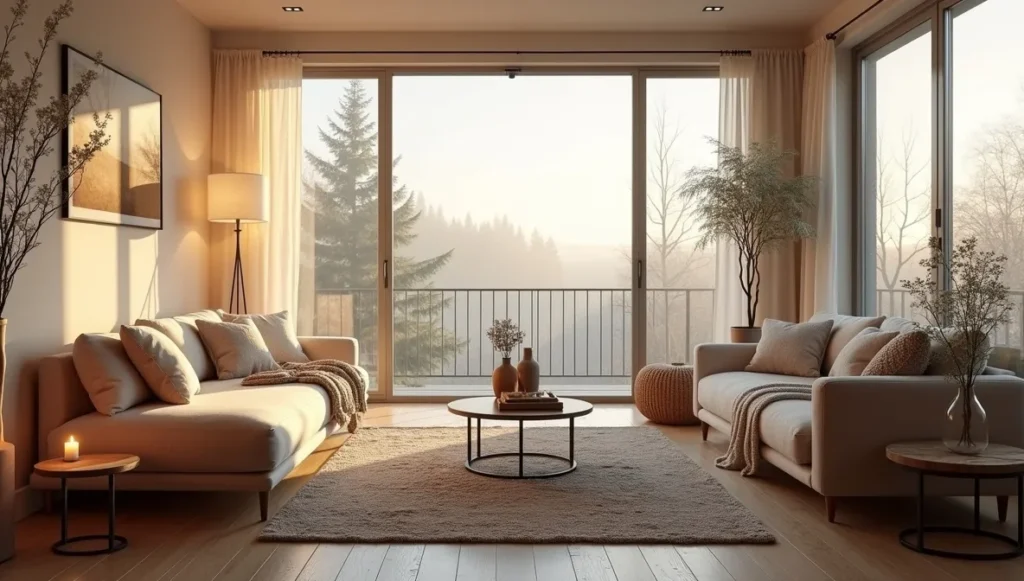- The Unexpected Magic of Boho Scandi: Why This Fusion Style is Taking Over Modern Homes - September 2, 2025
- Japandi Design: Why This Japanese-Scandinavian Hybrid Has Taken Over My Client Projects - September 2, 2025
- The Real Story Behind Transitional Interior Design: Why It Actually Works - September 1, 2025
Table of Contents
So here’s the thing…I started doing interior design back in 2009, and I’ve probably seen every trend you can imagine. Farmhouse everything, that whole gray phase, maximalist moments where people wanted to fill every corner. Most of it comes and goes pretty quickly. But Scandinavian design? It just keeps working. Project after project, year after year.
Last week I was at a client’s house in Phoenix…yeah, Phoenix, not exactly Nordic weather…and we were talking about why their newly renovated kitchen felt so good to be in. Warm white walls, simple oak cabinets, a few plants on the windowsill. Nothing fancy, but somehow it made you want to hang out there. That’s what I love about this approach. It’s not really about recreating some perfect Swedish cabin. It’s about understanding what makes people feel comfortable in their own homes.
The Practical Stuff That Actually Matters
Here’s what I’ve figured out over the years: Nordic countries get maybe four hours of decent sunlight in winter. Their whole design philosophy grew out of making the most of whatever light they had. Smart, right? Everything else follows from that. Light colors because they reflect more light. Natural materials because they feel good when you’re stuck indoors. Furniture that works hard because space costs money.
Window treatments are huge. I can’t tell you how many dark rooms I’ve transformed just by swapping heavy drapes for something light and airy. Sometimes I don’t use window treatments at all, depending on privacy needs. Mirrors help too, but you have to be strategic. Across from a window works great. Random mirrors everywhere just looks weird.
Storage gets obsessive attention. Every surface should do something useful. Ottoman that opens up? Perfect. Coffee table with shelves underneath? Even better. Benches with hidden compartments? Yes, please.
Color-wise, I stick to a pretty simple formula. Start with whites and creams, add light wood, then bring in grays and soft beiges through rugs, pillows, throws. If someone really wants color, we’ll pick one muted shade and use it sparingly.
Room by Room Reality Check
Living Rooms
Most people think furniture should face the TV. I get it, but try arranging things for actual conversation instead. Put the sofa where people can see each other and look outside. Lighting layers are everything. Overhead fixture, couple of table lamps, maybe a floor lamp for reading. And candles…not just for date nights, but regularly. Scandinavians burn candles like it’s their job. For furniture, linen sofas hold up better than you’d think. Wood coffee tables age beautifully. Low sideboards hide all your random stuff while looking intentional.
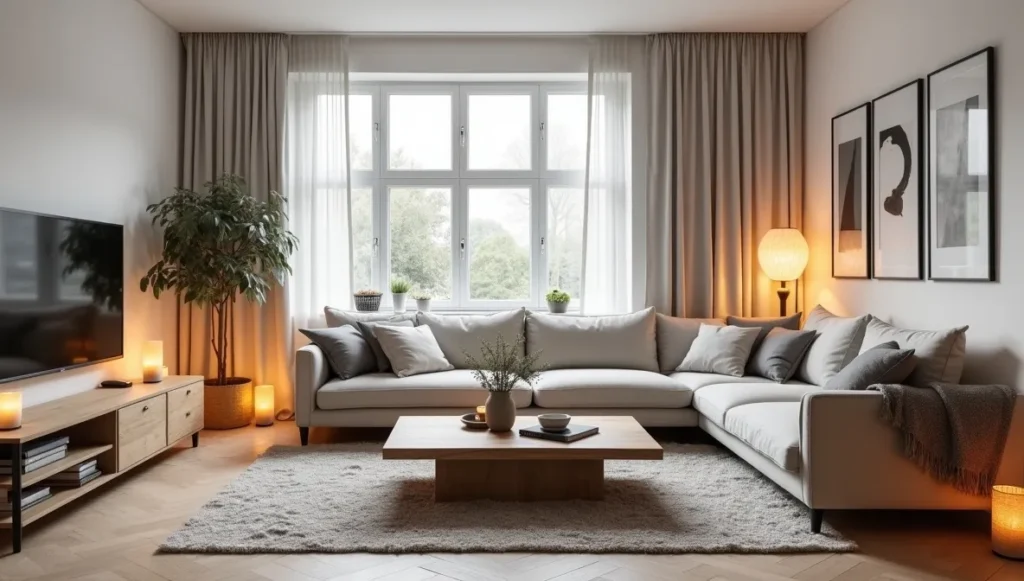
Bedrooms
Sleep quality starts with good bedding, and good bedding starts with natural fibers. Linen sheets, cotton duvet covers, maybe a chunky knit blanket folded at the foot of the bed. Furniture should be minimal but functional. Bed frame, two nightstands, some kind of storage situation. That’s usually plenty. Lighting in bedrooms drives me crazy when it’s done wrong. Harsh overhead lights kill any cozy vibe. Wall sconces work better than table lamps because they free up nightstand space. Blackout curtains aren’t optional if you want decent sleep.
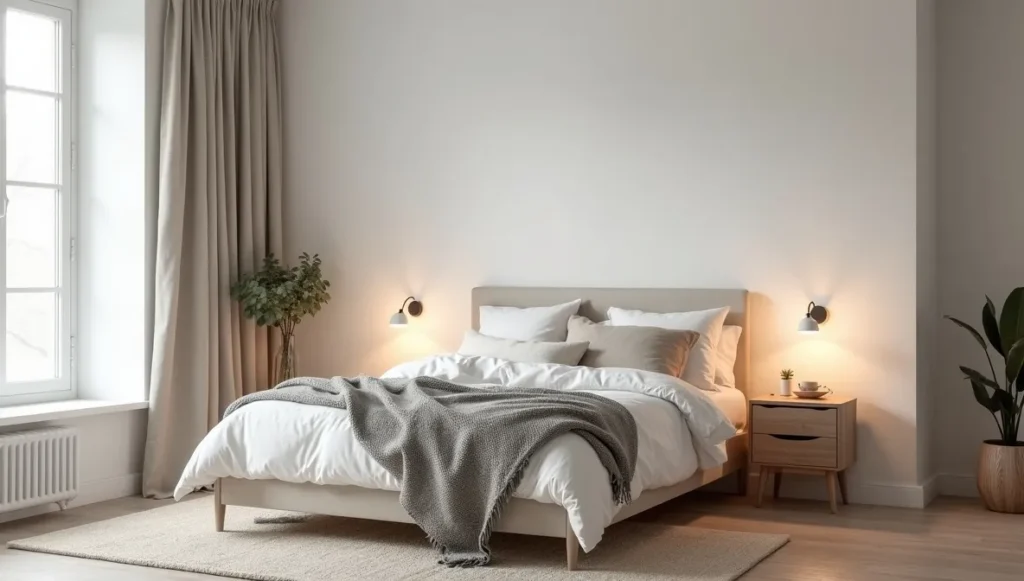
Kitchens
Nordic kitchens get used every day, not just photographed for Instagram. Light wood or white cabinets, minimal hardware, lots of counter space for actual cooking. I love butcher block countertops because they age well and feel warm. White quartz works too if you want something more bulletproof. Full backsplashes protect walls and look cleaner. Some counter space should stay empty, but don’t be afraid to leave out things you use constantly. Stack of wooden cutting boards, bowl of fruit, herbs growing on the windowsill.
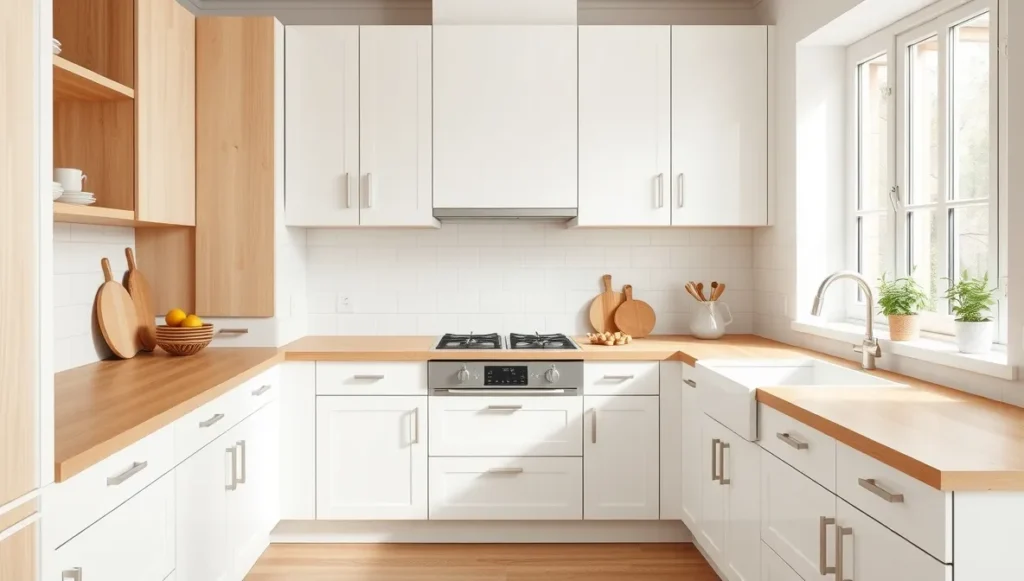
Dining Rooms
The table is your big investment. Solid wood, big enough for your family plus a few friends. Rectangular tables are more flexible than round ones, but both work. Mix up seating instead of matching everything perfectly. Wooden chairs plus a bench, or throw some sheepskin over hard seats to make them comfortable. Pendant light over the table, something dimmable for dinner parties. Start burning candles with regular meals, not just special occasions. Makes Wednesday night leftovers feel more intentional.
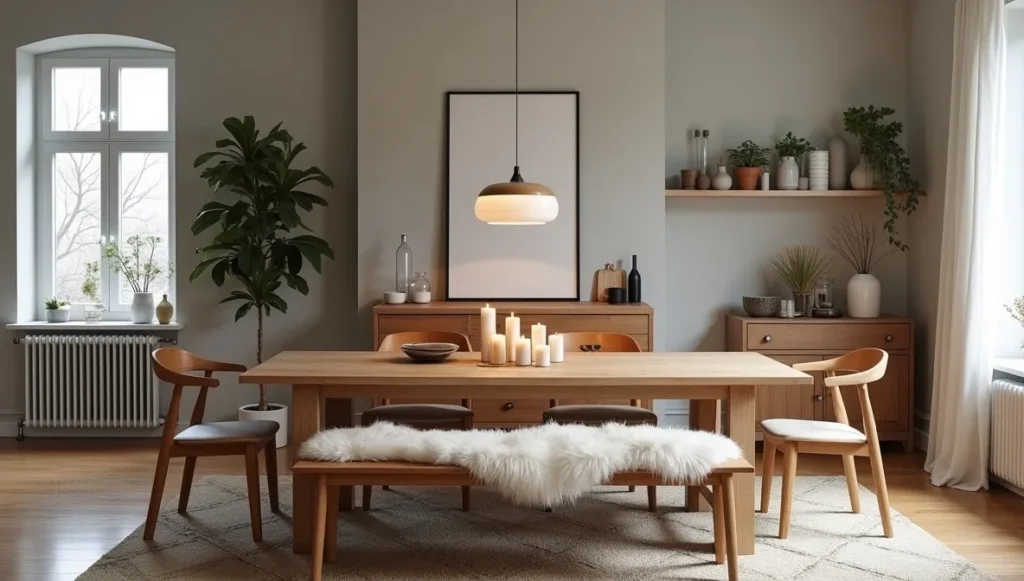
Bathrooms
With the right approach, a bathroom can have a calm, relaxing vibe. Keep counters clear, add wood accents where they make sense, get the lighting around mirrors right. Built-in storage beats stuff sitting on surfaces. Floating vanities with hidden compartments work well too.
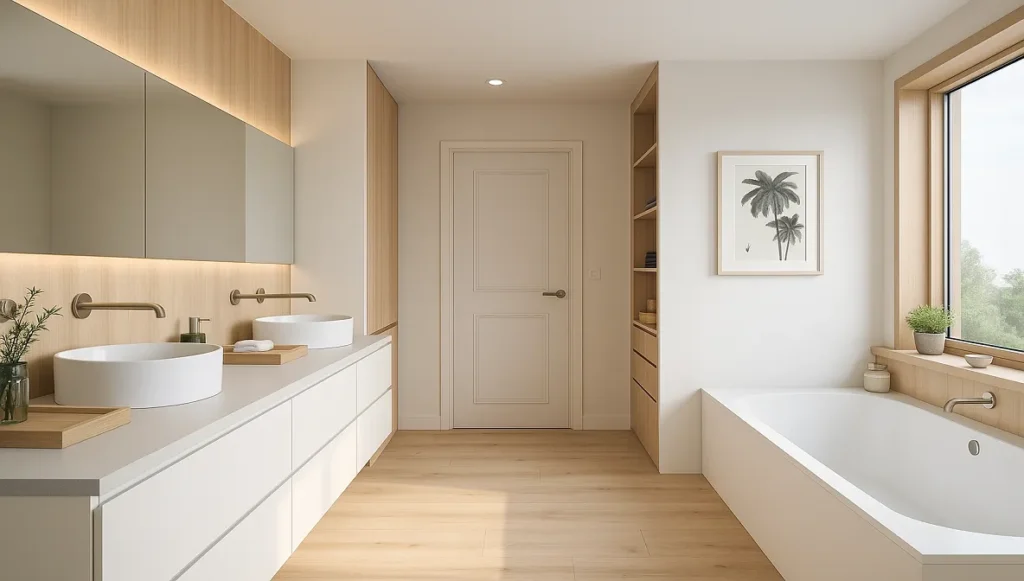
Home Offices
Clean-lined desk with enough space for your laptop and some papers. I usually skip desks with tons of built-in storage, separate organizers give you more flexibility. Good task lighting obviously, but add some ambient stuff too. Small table lamp, few candles. Makes the space feel less sterile when work’s over.
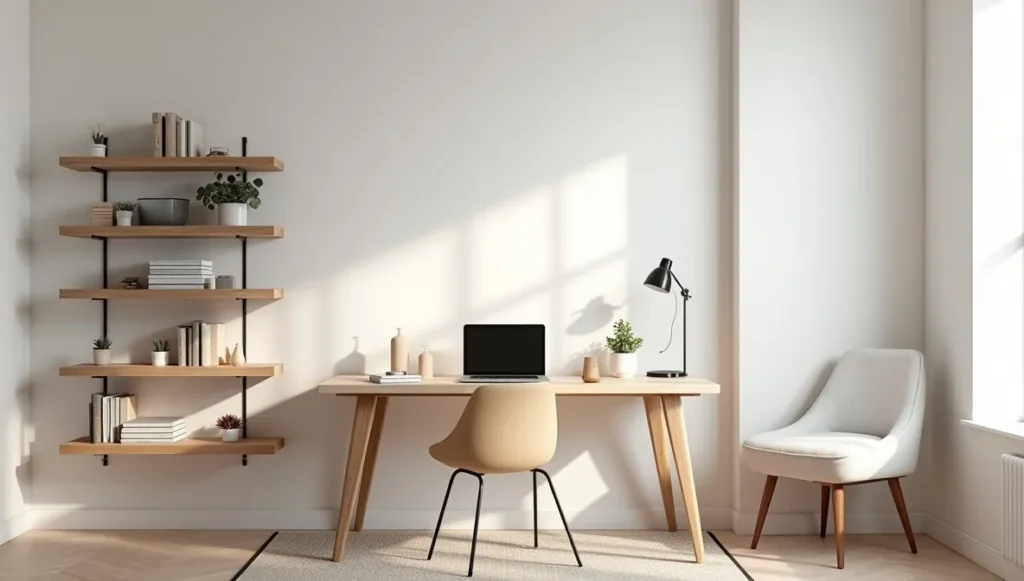
Where to Spend Money vs Where to Save
Worth investing in:
- Decent sofa in neutral fabric that won’t show every speck of dirt
- Solid wood dining table (you’ll have it forever)
- Good lighting fixtures
- One really nice area rug
Don’t overspend on:
- Throw pillows (they get dirty, styles change)
- Small decorative objects
- Plants and planters (start cheap, upgrade later)
- Desk organizers and storage containers
Common Screw-ups I See All the Time
Too much clutter: If you’re constantly shifting things around to find what you need, there’s too much stuff out. Put most of it away.
Prioritizing looks over comfort: Minimalist doesn’t mean uncomfortable. Add soft textures, make sure your chairs are actually pleasant to sit in, light things properly for whatever you’re doing.
Instagram copying instead of real-life thinking: Those pristine white rooms look great in photos but might not work with kids, pets, or just normal human messiness. Adapt the ideas to your actual situation.
Making It Work in Different Situations
Small apartments: This style’s perfect for tight spaces. Light colors make everything feel bigger, multi-functional furniture maximizes usefulness, good organization keeps things calm.
Hot weather places: Focus on airflow instead of cozy textures. Lighter fabrics, better connection between inside and outside spaces.
Limited budgets: Start with decluttering and maximizing whatever natural light you have. Add affordable natural textures through throws, plants, simple wooden accessories. Expensive furniture can come later.
Why It Keeps Working
After hundreds of projects, here’s what I’ve noticed: people love spaces that make their daily routine easier and more pleasant. This design approach does exactly that.
You don’t need to gut your whole house or spend a fortune. Clear some surfaces, add light-colored textiles, get a few plants. Focus on making your space work better for how you actually live day to day.
The best part is how well this stuff ages. Other styles start looking dated pretty quickly, but these basic principles just keep being useful. Your home becomes a tool that supports your life instead of just something that looks good when company comes over.
